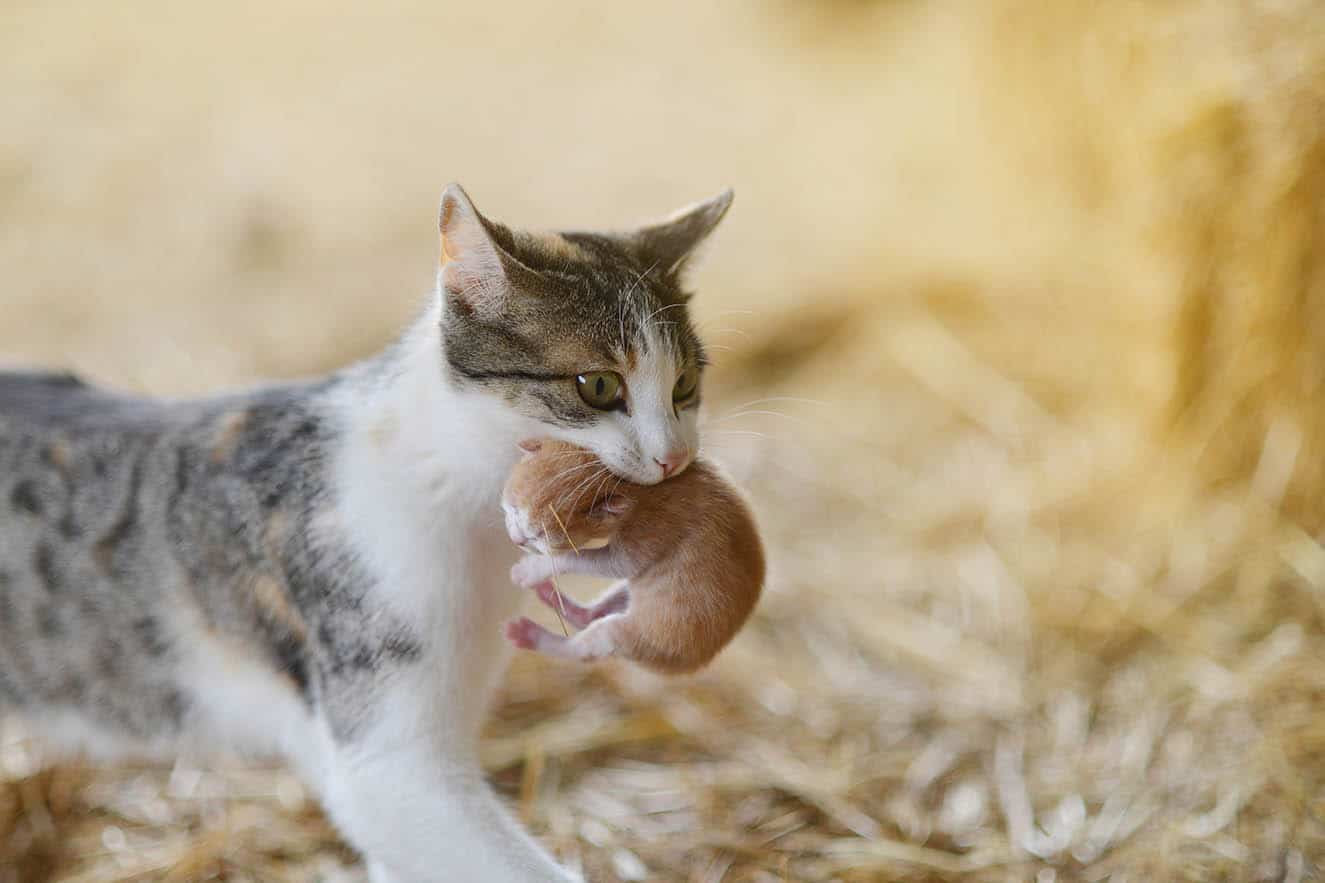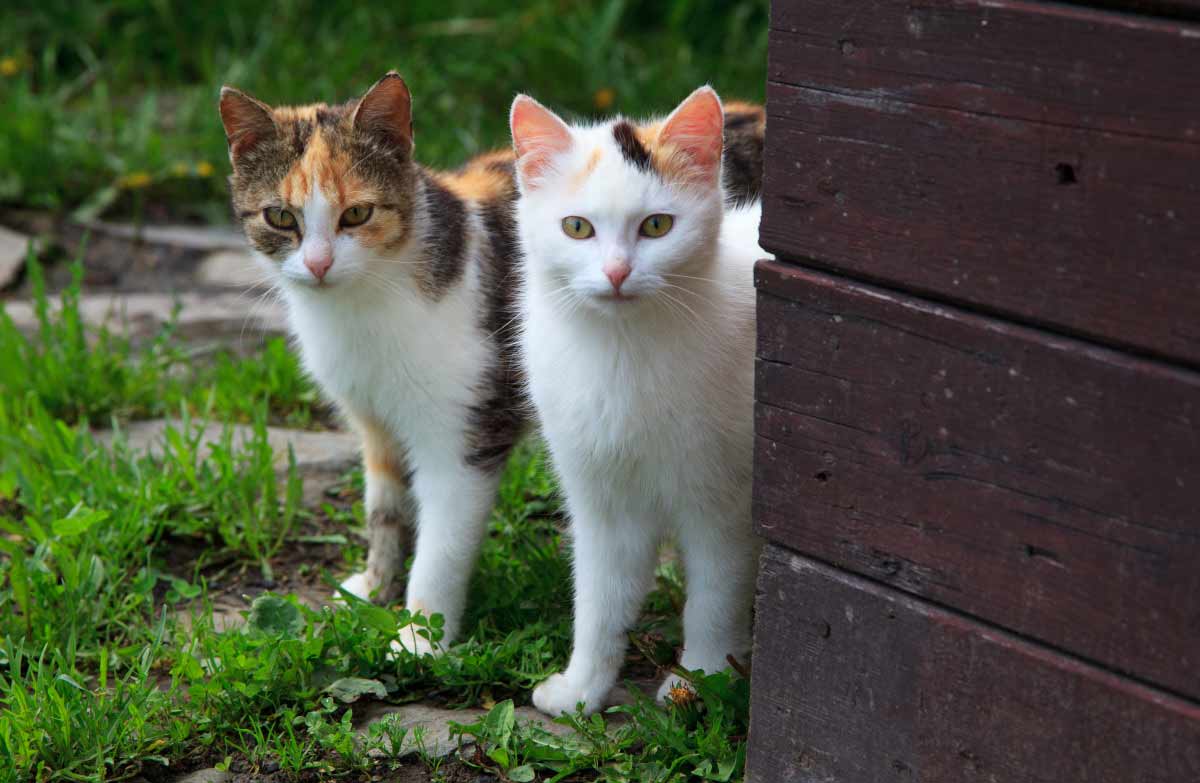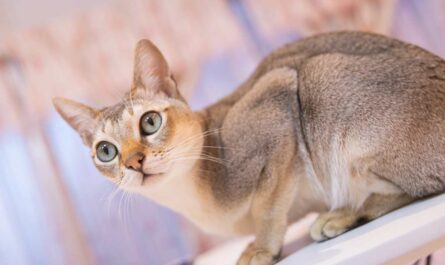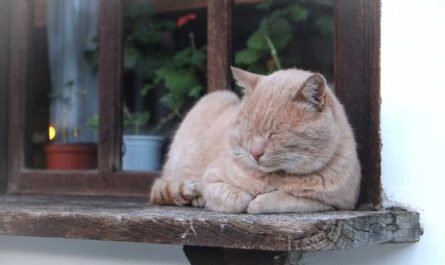Do mother cats discipline their kittens? Have you ever witnessed the hilarious chaos that erupts when a tiny ball of fluff, better known as a kitten, decides to unleash its boundless energy? Imagine your precious curtains transformed into a jungle gym, or your favorite houseplant turned into a chew toy. In these moments, it’s natural to wonder, “Do mother cats discipline their kittens?”
The answer might surprise you. While mother cats don’t “discipline” their young in the same way humans might, they do have natural ways of correcting unwanted behaviors. This article aims to demystify this concept, offering insights into feline communication and providing practical guidance for navigating the playful (and sometimes destructive) world of kittenhood.
Understanding Feline Communication: Beyond Human Concepts
Let’s break away from the human notion of “discipline” with stern voices and time-outs, and step into the fascinating world of feline communication. Unlike humans, cats don’t hold grudges or seek to “punish” their young. Instead, they rely on a unique repertoire of natural correction methods to guide their kittens’ behavior and ensure their survival.
Imagine a symphony of meows, hisses, and purrs – this is how cats “talk” to each other and the world around them. Each vocalization, from a playful meow to a warning hiss, carries a specific message. Mother cats, through experience and instinct, expertly use these sounds to convey disapproval, redirection, or reassurance to their kittens.
But communication goes beyond sound. Facial expressions, from narrowed eyes to relaxed whiskers, and body language, like a swishing tail or a flattened posture, also play a crucial role. Through these subtle cues, mother cats can communicate entire sentences to their little ones, shaping their social skills and setting boundaries.
So, how do mother cats “correct” their kittens? Their methods might seem harsh at times, but they serve a vital purpose in shaping good behavior:
- Redirection: Imagine a kitten swatting at your hand – a mother cat might gently nudge the kitten towards a more appropriate plaything, like a dangling toy.
- Swatting: This might appear aggressive, but a mother cat’s swat is usually gentle and serves as a reminder of acceptable play boundaries.
- Hissing: This vocalization acts as a clear signal of disapproval, teaching kittens to avoid unwanted behavior like biting or scratching.
- Vocal reprimands: A low growl or a sharp meow can effectively communicate displeasure and deter further misbehavior.
These natural consequences help kittens learn crucial lessons about acceptable behavior within the feline social hierarchy. While they might seem like mere “playful squabbles” to our human eyes, these interactions are vital for a kitten’s development and social maturity.
Stay tuned for the next section, where we delve deeper into practical tips for new cat owners on how to interpret feline communication and manage your kitten’s behavior positively and effectively.
The Sensitive Parenting Period: Early Lessons for Life
Imagine a tiny ball of fluff tumbling around, playfully swatting at its siblings. While this might seem adorable, it’s a crucial stage in a kitten’s life: the sensitive parenting period. This window, lasting from 2 to 7 weeks after birth, is a time of immense learning and development for kittens. Just like human babies in their formative years, kittens are like sponges, soaking up information and experiences that will shape them into confident, well-adjusted cats.
A Crucial Window for Socialization
During this sensitive period, kittens are especially receptive to learning about the world around them, including social interactions with other cats and humans. This is a prime time for socialization, helping kittens develop the ability to interact positively with others and avoid fearfulness or aggression later in life. Think of it as their first “social butterfly” phase, where they’re eager to learn the “dos and don’ts” of cat etiquette.
Playful Learning: A Purrfect Classroom
Those adorable wrestling matches and playful nips between littermates aren’t just fun and games – they’re important lessons for kittens. Through play fighting and wrestling with their siblings, kittens learn valuable skills like bite inhibition, meaning they learn to control the force of their bites, and appropriate claw use. This playful “roughhousing” also helps them develop their coordination, agility, and social interaction skills, essential for navigating the world as an adult cat.
Motherly Guidance: Nurturing and Setting Boundaries
While playtime might get a little enthusiastic at times, the mother cat plays a crucial role in guiding and correcting her kittens’ behavior. Imagine her as a kind but firm teacher, gently reminding them when their play becomes too rough or their bites too strong. She might hiss, swat lightly, or even let out a short meow to communicate her boundaries. This helps the kittens learn to self-regulate their behavior, ensuring they can enjoy playful interactions without causing harm to themselves or others.
The Everlasting Impact
The lessons and experiences kittens receive during this sensitive period have a lasting impact on their adult behavior. Just like how our childhood experiences shape who we become, the way kittens are raised and the interactions they have during this crucial window can influence their confidence, social skills, and even their reaction to stress throughout their lives. By understanding this critical stage, we can provide kittens with a positive and enriching environment, setting them on the path to becoming happy, well-adjusted feline companions.
Common Kitten Behaviors & Managing Expectations
The Adorable Rascals and Their Playful Pranks
Remember that adorable ball of fluff bouncing around your home? The one with the boundless energy and a penchant for turning your furniture into a personal scratching post? While their antics might leave you wondering if they’re “being naughty,” it’s important to remember that kittens are simply exploring the world around them, learning and growing through play. Let’s delve into some typical behaviors that might leave you scratching your head and, more importantly, how to manage them with a positive and proactive approach.
A World of Discovery Through Play
Imagine your kitten as a tiny explorer, venturing into a vast and fascinating world. Every object, every corner, is an invitation to investigate, to learn, and to play. This is why scratching furniture, chewing on wires, or pouncing on your feet might seem like “misbehavior” from our perspective, but for them, it’s simply a natural way to engage with their surroundings. Kittens are curious creatures with a seemingly endless amount of energy, and their playful behavior is a crucial part of their development.
Setting Realistic Expectations: Understanding the “Why”
It’s important to set realistic expectations when welcoming a kitten into your home. Don’t expect them to understand human concepts of “good” and “bad” behavior from the get-go. Instead, try to see the world through their playful eyes. Is your kitten scratching the sofa? Perhaps they haven’t been provided with a designated scratching post or their current one isn’t stimulating enough. Does your little furball keep attacking your feet? Maybe they’re seeking attention or simply haven’t learned the boundaries of appropriate play. By understanding the underlying needs or motivations behind their actions, we can move towards positive solutions.
Prevention is Key: Creating a Kitten-Friendly Environment
The key to managing undesired behavior lies in prevention rather than punishment. Consider your kitten’s instincts and provide them with the tools they need to express themselves in appropriate ways. Here are some proactive approaches you can take:
- Environmental Enrichment: Create a stimulating environment filled with engaging toys, scratching posts of different textures, and climbing structures. This will give your kitten healthy outlets for their energy and prevent them from seeking entertainment elsewhere (like your furniture!).
- Provide Safe and Engaging Toys: Rotate a variety of toys, including scratching posts infused with catnip, interactive puzzle feeders, and feathery wand toys, to keep your kitten engaged and mentally stimulated.
- Redirection Through Play: Whenever your kitten exhibits unwanted behavior, gently redirect them towards their designated toys or scratching post. This positive and playful approach teaches them what is acceptable and reinforces desired behaviors.
Remember: Patience, positive reinforcement, and understanding are key when dealing with kitten behavior. By providing them with a stimulating environment, engaging toys, and gentle guidance, you can help your furry friend develop into a well-adjusted and delightful feline companion.
Additional Tips
- Consider clicker training as a positive reinforcement method to teach your kitten desired behaviors.
- If you’re struggling with persistent behavioral issues, consult a certified animal behaviorist for personalized guidance.
- Remember, every kitten is an individual, and their learning pace and needs may vary. Be patient, and consistent, and celebrate their progress along the way!
By adopting these strategies and embracing the playful nature of kittens, you can navigate this exciting stage of their development and build a strong foundation for a happy and fulfilling relationship with your feline friend.
Positive Reinforcement: Building a Bond & Encouraging Good Behavior
Ever noticed how a playful pounce from your adorable kitten can quickly turn into a painful nip on your finger? While these playful antics might seem harmless, they can quickly become unwanted behaviors. But before you raise your voice or resort to harsh punishments, remember: kittens are like tiny sponges, soaking up everything around them. Instead of focusing on “discipline,” let’s shift our focus towards fostering a positive and nurturing environment that encourages good behavior and builds a strong bond between you and your feline friend.
Rewarding the Good: Positive Reinforcement Takes Center Stage
Think of your kitten as a little explorer, eager to learn and discover the world around them. They’ll naturally test boundaries and experiment with different behaviors. Our role, as responsible cat owners, is to guide them toward the behaviors we want to see and discourage those we don’t. This is where positive reinforcement becomes your secret weapon!
Imagine this: your kitten, brimming with energy, starts scratching the arm of your couch. Instead of yelling or swatting, redirect their attention to a scratching post. When they use the post appropriately, shower them with praise, gentle petting, or their favorite toy. This positive association with the desired behavior makes it more likely they’ll choose the scratching post in the future.

Positive reinforcement can take many forms:
- Verbal praise: A simple “good kitty” or “yes!” can go a long way in encouraging desired behaviors.
- Affection: Gentle petting and scratching behind the ears show your kitten they’ve made you happy.
- Treats: Opt for healthy, cat-approved treats like little pieces of cooked chicken or freeze-dried salmon. Remember, treats should be given sparingly and used strategically to reinforce desired behaviors.
- Playtime: Engaging in interactive playtime with your kitten using feather wands or catnip-filled toys burns off their energy and strengthens your bond. How AI, ChatGPT maximizes earnings of many people in minutes
Remember, patience and consistency are key. Don’t expect your kitten to understand everything right away. Keep your training sessions short, positive, and fun, and soon you’ll see your furry friend blossoming into a well-behaved feline companion.
Clicker Training: A Gentle Nudge in the Right Direction
For some cat owners, clicker training can be a valuable tool in shaping desired behaviors. Clicker training uses a clicking sound (produced by a small handheld device) to mark the exact moment your cat performs a desired behavior. This click is then immediately followed by a reward, creating a positive association between the behavior and the reward. Motivation – Mind – Success – Thinking – Productivity – Happiness
Clicker training can be a great way to teach your kitten basic commands like “come,” “sit,” or “stay.” However, it’s important to remember that clicker training requires patience, dedication, and a positive attitude. If you’re interested in learning more about clicker training, consider consulting a professional animal trainer or reputable online resources.
Building Trust & Respect: The Foundation of a Happy Relationship
The most important thing to remember is that building a strong and trusting relationship with your kitten is vital for fostering good behavior. This means creating a safe and enriching environment where they feel loved and respected.
Be patient and understanding. Kittens are curious and playful creatures who are still learning about the world. Instead of focusing on punishment, focus on providing positive experiences and opportunities for them to learn. Remember, a calm and consistent approach will go a long way in building trust and respect with your feline friend.
Ignoring the Unwanted: When Silence Speaks Volumes
In some cases, ignoring unwanted behaviors can be an effective strategy. This is especially true for behaviors that your kitten might find rewarding, such as biting or jumping. When they engage in these behaviors, avoid giving them any attention, whether it’s eye contact, verbal reprimands, or physical reactions. This lack of attention can often be enough to discourage the behavior, as kittens often seek reactions and engagement from their humans. Business – Money Making – Marketing – E-commerce
However, it’s important to note that ignoring shouldn’t be your only strategy. This approach can be frustrating for both you and your kitten, and it might not address the underlying cause of the behavior. If you’re struggling with persistent unwanted behaviors, it’s always best to consult a veterinarian or animal behaviorist to rule out any medical issues and explore alternative solutions.
By focusing on positive reinforcement, building trust, and utilizing a variety of gentle and effective techniques, you can create a harmonious and fulfilling relationship with your feline companion. Remember, patience, consistency, and a whole lot of love are the key ingredients in helping your kitten blossom into a happy and well-adjusted cat.
Addressing Specific Behavioral Challenges: A Helping Paw for Common Concerns
While kittens are undeniably adorable balls of fluff, their boundless energy and curiosity can sometimes lead to behaviors that leave owners feeling perplexed or frustrated. Fear not, fellow cat enthusiasts! This section equips you with the knowledge and tools to tackle common feline challenges and foster a harmonious home environment for both you and your furry friend. Health books, guides, exercises, habits, Diets, and more
Focus on Specific Issues
-
Litter Box Woes: Has your once-perfect litter box user suddenly chosen alternative locations to “go”? This could indicate a variety of reasons, from medical discomfort to a dislike of the litter, location, or cleanliness of the box. Be sure to rule out any underlying health concerns with a visit to your veterinarian. Clean the litter box regularly, experiment with different litter types and textures, and consider adding the box in a quiet location.
-
Climbing Conundrums: Kittens are natural-born climbers, but their sharp claws can wreak havoc on your furniture. Provide them with ample opportunities to climb and explore through strategically placed cat trees, scratching posts, and shelves. Reward positive scratching behavior in these designated areas and discourage inappropriate scratching with gentle redirection and double-sided tape on tempting surfaces.
-
Vocalization Vexation: Whether it’s an insistent meow or an ear-splitting yowl, excessive vocalization from your kitten can be disruptive. First, ensure their basic needs are met (hunger, thirst, litter box access). Address any potential sources of anxiety or stress, like loud noises or unfamiliar people. Engage them in interactive play sessions to expend energy and provide mental stimulation. Fitness – Meditation – Diet – Weight Loss – Healthy Living – Yoga
-
Aggression Anxieties: If your kitten displays signs of aggression, such as hissing, swatting, or biting, it’s crucial to understand the underlying cause. This behavior could stem from fear, playfulness gone awry, or redirected aggression. Avoid physical punishment, as it will only worsen the situation. Consult a qualified animal behaviorist to identify the trigger and learn effective management techniques.
Tailored Solutions
Remember, there’s no one-size-fits-all solution to feline behavior challenges. Be patient, and consistent, and celebrate even small improvements. Positive reinforcement, like treats, praise, and petting, is far more effective than punishment in shaping desired behaviors. RPM 3.0 – 60% CONVERSION & Money for Affiliate Marketing
When to Seek Professional Help
If behavior persists or escalates despite your best efforts, don’t hesitate to seek professional guidance. A qualified animal behaviorist can assess the situation, identify the root cause, and develop a personalized plan to help you and your kitten navigate these challenges and build a stronger bond.
Conclusion: A Journey of Learning and Love
Understanding the difference between human discipline and feline correction is key to fostering a positive relationship with your kitten. Early socialization through gentle handling, exposure to different people and environments, and positive interactions lay the foundation for a well-adjusted adult cat. Cat accessories on Amazon
Remember, addressing kitten behavior is a continuous learning journey for both you and your furry friend. Embrace the challenges and celebrate the joys of kittenhood, providing consistent guidance and love. With patience, understanding, and the information provided here, you can nurture a happy and healthy feline companion who will bring years of love and laughter into your life.
So, take a deep breath, arm yourself with this knowledge, and embark on this exciting adventure with your whiskered wonder. As the saying goes, every journey begins with a single paw print!
Other Interesting Articles
- How to Stop A Cat from Spraying after Neutering: 11 Tips
- How to Tell if A Cat is in Pain from Arthritis: How to Help
- 14 Reasons Why Is My Cat Making Weird Purring Noises
- How to Take Care of A Kitten without A Mother: 21 Tips
- What Is Caterwauling? 10 Most Common Reasons Cats Do It
- How to Introduce A Cat To A New Home When Moving?
- Cat Declawing: Tips, FAQs, Health, Alternatives, Pros, Cons
- New Cat? 20 Common Warning Signs When Introducing Cats
- 23 Sure Signs Your Cat May Be in Pain and How to Help It
- How to Stop A Neutered Cat From Spraying: 15 Simple Tips
- 12 Signs Your Cat May Require a Feline Companion
- Feline Pheromones: 12 Ways Calming Cat Pheromones Work
- Do Cats Feel Lonely without Other Cats? 6 Signs of Loneliness
- 10 Reasons Why Cats Hiss: How To Stop The Behavior
- Cat Feeding: Tips, Guide, FAQs, Chart for Kittens to Veterans
- Cat Vaccinations: Schedule, FAQs, Side Effects, and Costs
- 44 Strange, Weird, and Random Cat Behaviors Explained
- 21 Pro Tips for Fostering Kittens: Essential Care Guide
- 18 Cat Sounds Your Feline Makes: What They Mean
- Sexing Kittens: How to Tell, Determine the Sex of Your Kitten



